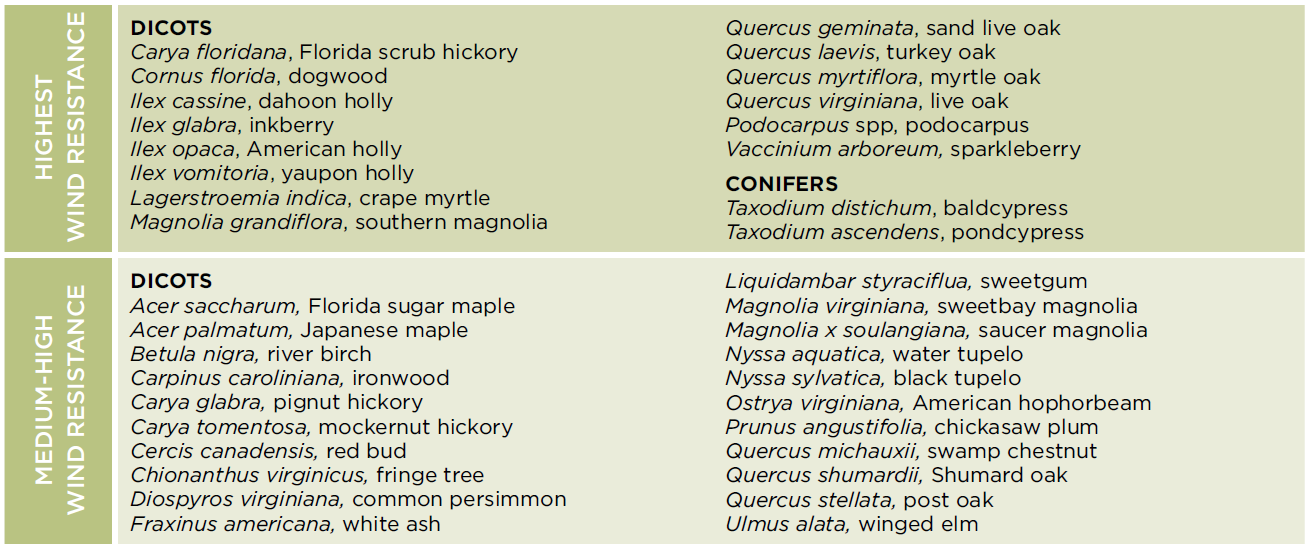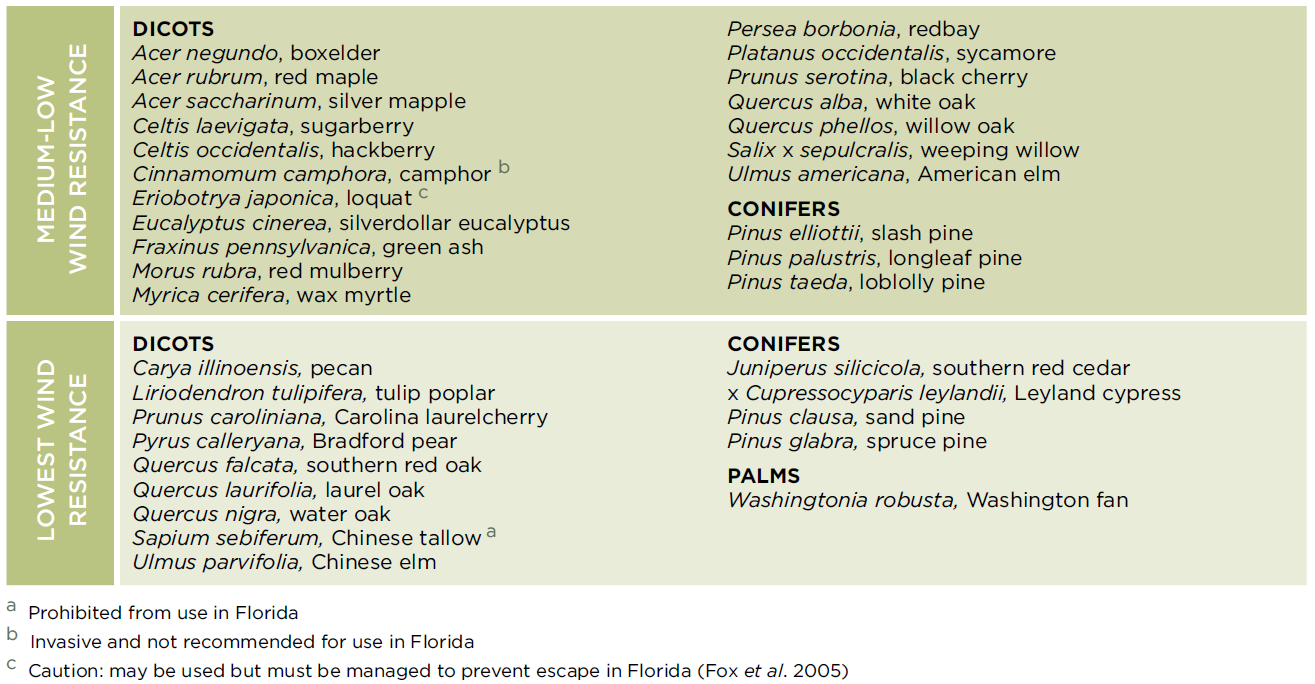Urban forests are the trees that surround our homes, streets, parking lots, schools, and parks. Urban forests can be used to help mitigate the negative effects caused by urbanization and development. While urban forests have many benefits, some of the most notable community benefits include how they can: curb air pollution, improve water quality, decrease soil erosion, provide wildlife habitat, and buffer noise pollution. After a hurricane, many communities will lose trees in residential yards, city parks, and in the right of way. This blog post seeks to share information on recommended wind-resistant trees.
Planting Wind-Resistant Species After a Hurricane
As demonstrated by hurricane Irma, hurricane-force winds can cause extreme damage to communities and urban forests. Scientists at the University of Florida/Institute of Food and Agricultural Sciences (UF/IFAS) have tracked and studied major hurricanes since Hurricane Andrew in 1992. One of the purposes of this study has been to compile a list of wind-resistant tree species. If you lost trees and plan on replanting, read on to learn about which trees are most hurricane-resistant.
Most Wind-Resistant Species
It is important to note that there is no such thing as a completely “wind-proof tree.” In addition to species choice, there are important environmental factors to consider when planting trees including: soil conditions, availability of water, and yard placement as it relates to sunlight.
According to research conducted by University of Florida scientists, the most resistant species to wind-related damage are: sand live oak (Quercus germinata), southern magnolia (Magnolia grandiflora), and live oak (Quercus virginiana). Other good species include: crapemyrtle (Lagerstroemia indica), bald cypress (Taxodium distichum), and sabal or cabbage palm (Sabal palmetto).

Important Considerations
In addition to planting strong, wind-resistant trees, there are other measures you can take to help with wind resistance, including:
- Ensure plenty of root space. The more space trees have for rooting, the more anchored and healthy they will be.
- Properly pruning your trees is important for not only their health, but also for wind-resistance.
- Trees that are planted and grow in groupings will be more wind-resistant than individual trees.
- Native trees have been proven to survive better than exotic trees.
Trees to Avoid Planting
Brittle branches, weak root systems, or poor structure can cause a tree to fail during a hurricane. Some of the tree species which were determined to be the least wind-resistant include:
- Sand pine (Pinus clausa)
- Chinese elm (Ulmus parvifolia)
- Water oak (Quercus nigra)
- Laurel oak (Quercus laurifolia)

Summary
In conclusion, it would be wise to select wind-resistant trees for planting for your home, business, or city park landscaping in order to be prepared for the next hurricane or strong summer storm.
To improve your future tree’s success, plant it in an area suitable for the species with adequate root space. Trees with more root space often form healthier and stronger root systems, and therefore, healthier and more wind-resistant trees.
For more information…
For more information on wind-resistant trees or planning for a hurricane resistant urban forest, please read the UF/IFAS document, “Trees and Wind: Lessons Learned from Hurricanes.”
You can also contact the UF/IFAS Polk County Extension’s Plant Clinic:
Monday – Friday
9:00 AM – 4:00 PM
(863) 519-1057
Email a Polk County Master Gardener: polkmg@ifas.ufl.edu
Sources:
- http://edis.ifas.ufl.edu/pdffiles/FR/FR17400.pdf
- http://edis.ifas.ufl.edu/fr173
- https://blogs.ifas.ufl.edu/polkco/2017/09/08/471/
- http://edis.ifas.ufl.edu/fr175
- http://gardeningsolutions.ifas.ufl.edu/plants/trees-and-shrubs/trees/trees-that-can-withstand-hurricanes.html
This blog post was written by Natural Resources Extension Program Intern, Ms. Paxton Evans, under supervision by Natural Resources and Conservation Extension Agent, Mrs. Shannon Carnevale.
University of Florida IFAS Extension is committed to diversity of people, thought and opinion, to inclusiveness and to equal opportunity. UF/IFAS Extension is an Equal Opportunity Institution.
 2
2
